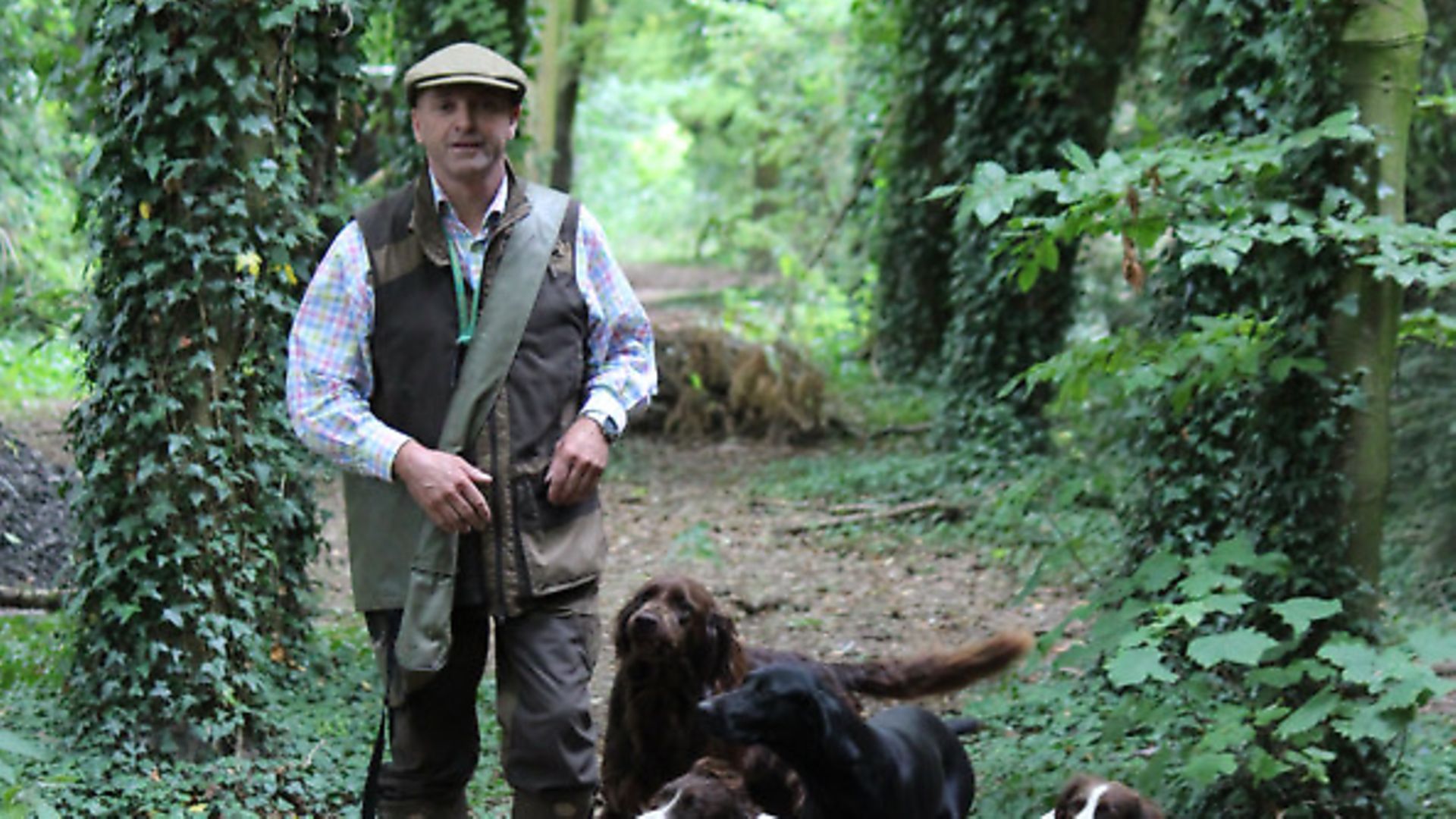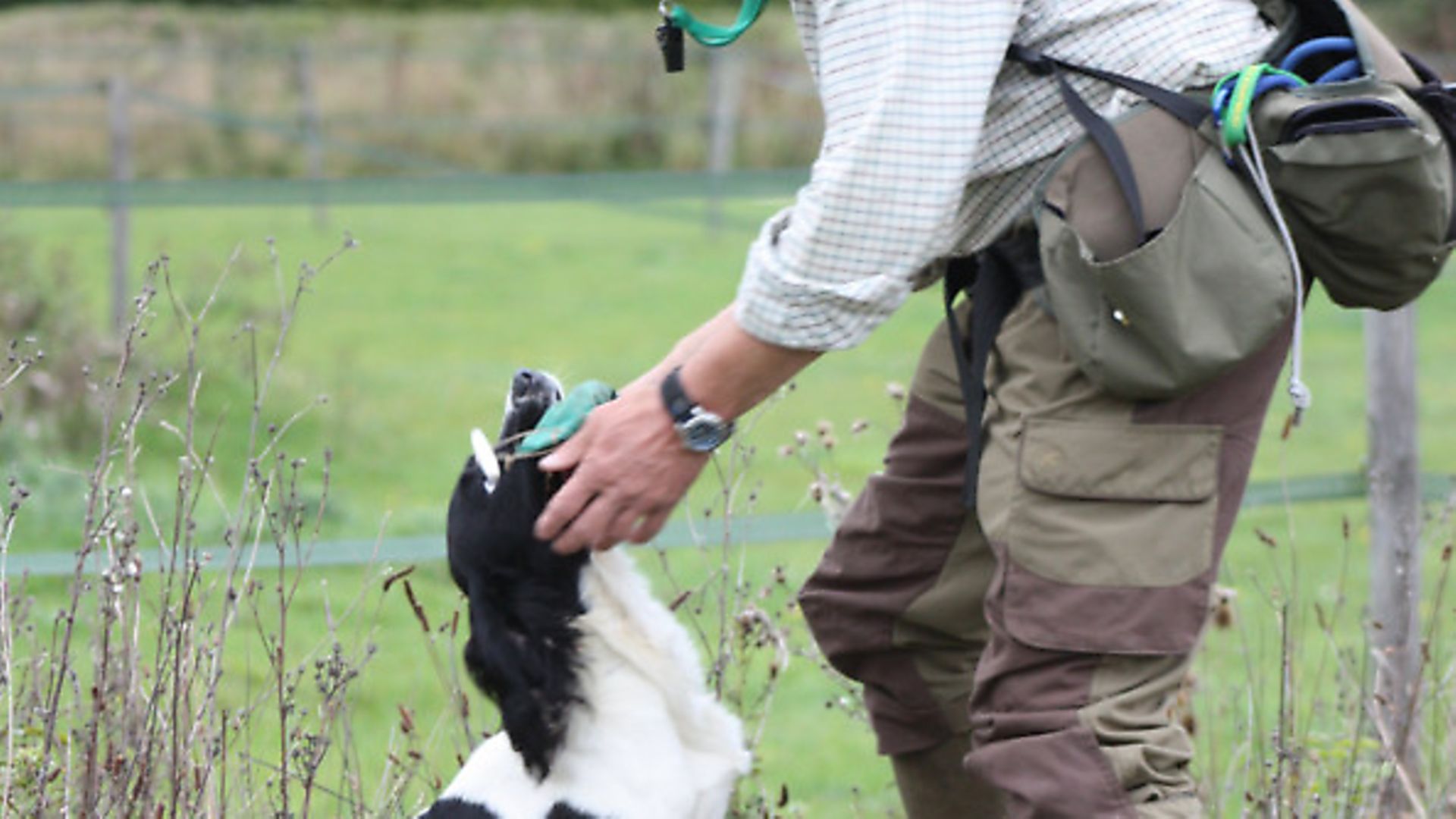A checklist compiled by respected trainer Howard Kirby, to test whether your gundog is ready to go and work in the field
 credit: Archant
credit: Archant
Ensuring that your dog is thoroughly prepared to face the demands of the shooting field can be quite daunting, particularly if you are doing it for the first time. So I thought it might be helpful to take a look at some of the things we need to have in place if we are going to get the best from our gundogs. The first thing to ask ourselves is which of the many roles are we going to ask our dogs to perform? Will it be beating, picking-up, wildfowling, rough shooting or on the peg? For many of us, the answer to that question will be a bit of everything: we need a dog that’s a real all-rounder. It’s quite a tall order, really, but perfectly possible.
I think it’s quite important to ensure that we don’t get all high and mighty about what’s right and wrong with the standards we expect from our trained gundogs. A picking-up colleague of mine does things very simply in that he takes on dogs that have been offered for rehoming for a variety of reasons, and provided they have a good retrieving instinct in them, he gets them home, bonds with them and within a few weeks has got them out working as part of his team. The point I’m trying to make is that your dog does not have to be a Field Trial Champion to be able to be a useful companion in the field. However, if your dog is not properly prepared, gets overexcited and out of control, it can be a real problem, not to mention embarrassing and possibly dangerous. I guess it goes without saying that the better trained our dogs are the easier they will be to manage and, of course, they will be more versatile.
For example, imagine you’ve just worked your dog through a drive and are as pleased as punch that he has worked close, flushed a number of birds over the standing Guns, ignored a muntjac that leapt out in front of him, and he’s done all of that without you having to be at him too much with the whistle. As you walk out of the cover, one of the Guns calls out to you: “I say, Beater Person, I shot a bird! Can you see that oak tree about 100 yards back up that bank? The bird is definitely dead in that bracken just to the right of it. Would you be a jolly good chappie (note to self: he’s just referred to me as a budget brand of dog food) and retrieve it for me?” The correct reply of course is: “Yes, sir, I’d be delighted.” Now’s your big chance. There are two ways to deal with this.
1. The grown-up way is to quietly call your dog in to heel, walk up the bank to the bracken, ‘click’ your dog off, let him find the bird and rejoin your beating colleagues as quickly as possible.
2. But, hey! Two years of endless heelwork, recall, send-aways, delivery to hand, directional commands and stop-whistle training – not to mention several occasions of total humiliation at gundog training classes – are not about to go to waste: if you’re going to go for option two you need to do this in style!
You move out into the open so that you can see a line to the oak tree (if you get this right it will also ensure that you allow your audience maximum opportunity to witness the spectacle that is about to unfold). Carefully and quietly line the dog up with the bracken and the moment he sets his eyes to it you cast him, “Back!” He flies up the bank, but oh no, 50 yards out he hits scent and starts to hunt.
At this point, mere mortals would be in big trouble, but not you. His nose has barely hit the ground when you blow the stop whistle, he spins and sits staring straight at you. Your hand shoots high above your head and you murmur, “Back.” In an instant the dog spins around and takes a line back to the bracken. The moment he hits it you give him a ‘shimmy’ on the hunt whistle. The dog smashes the cover apart before diving into the bracken and lifting out the bird.
A few seconds later the dog is sat in front of you and delivers the bird to hand. You punch the air and let out a “Whoop whoop!” Not now, you idiot! Let’s do this properly. Instead, you quietly turn to the Gun and offer him his bird. The Gun says, “Bloody marvellous, old boy, truly remarkable. You chappies certainly know how to work a dog.” You say, “Why thank you, sir. My pleasure.”
As you turn and walk discreetly away with Fido at heel, there’s no question in anyone’s mind as to just exactly who the daddy is!
 credit: Archant
credit: Archant
So here’s a list of achievable behaviours that should be in place if we are to engineer the above scenario and really prove our worth in the field.
1 The dog should want to be with you.
I know it sounds obvious but life is so much easier if the dogs you’re working with want to be with you. It’s all about that hunting team mentality: as long as the dog believes you’ll help him to put game in his mouth, he will work with you. If he thinks he can do it without you, then he will give it a go. Early training was all about establishing this partnership. How you manage the dog, how much of a free rein you give him and where and when you do this will affect the long-term future of your shooting companion. This is just the beginning of his career so keep him on a ‘short rein’ and try to avoid problems.
2 The dog needs to be fit.
A day in the field can be tough on a dog. If you ensure he’s physically fit he’s much less likely to sustain an injury. Tired dogs are less responsive. Keep an eye on how the dog’s doing – some dogs will run themselves into a state of exhaustion.
 credit: Archant
credit: Archant
3 The dog must be steady.
Whilst we can control our dogs with the use of a lead, life is so much easier if the dog is steady. A dog that can be trusted to stay at heel and doesn’t run off, leaves you hands-free and able to concentrate on the action.
4 The dog needs to have gun sense.
If your dog is steady and can sit up or work off lead he, too, can concentrate better. As predators, dogs quickly learn that a shooter with a gun brings them ‘the prey’. This is best learned in the training field. This is easier to do if you work and train with other trainers. Organised training days can be really good for this. We need the dog to understand that the shotgun and the bang of the shot is directly connected to getting game in his mouth. An experienced dog will instinctively look towards the gun when he hears the safety catch being released, sees the gun being mounted or hears a shot. He will have made a connection between the scent left by a shot column or a shot scent around a rabbit that has been shot; both of which he can use to locate shot game. We can fire shots in and around dummies or cold game in training to give the dog this experience.
5 The dog needs to be able to deliver to hand.
Ensuring your dog delivers to hand is so important. It often gets overlooked, so do everything possible to get this sorted if you are struggling with this area.
 credit: Archant
credit: Archant
6 The dog needs to be obedient to the recall, turn whistle and stop whistle.
Obedience to the whistle or your voice commands will very quickly fall apart if it is not 100% cemented – live game takes your dog’s drive up to another level, so be prepared. If you let the obedience start to slip it will only take a few outings before the dog becomes out of control.
7 The dog needs to be a good retriever from water.
Gundogs can be excellent swimmers and retrievers, but like most things it requires practice. Ensure your dog has enough experience in water to make him a confident swimmer. If you’ve done all your obedience training well, he will respond to all of your whistle and directional commands while in the water.
8 The dog needs to be able to jump on command.
We go to great lengths to teach our dogs to be confident with their jumping. It’s kind of inevitable that your dog will need to jump at some point while hunting or retrieving game; the more practice he has the safer and more efficient he will be at it. Just a word of warning: do everything possible to avoid asking your dog to jump barbed wire – it can inflict serious injuries.
So there’s an outline checklist for you to consider. It’s just a guide; some of it is essential, other things you can manage without. Taking your first gundog into the shooting field can be quite daunting. If you really feel that your dog is too young and perhaps not well trained enough, then err on the side of caution. There’s plenty of time; get as much experience for yourself as possible. Dogs don’t suffer fools; they will run rings around you if they get so much as a sniff that you’re lacking in confidence.
The shooting world is packed with wonderful, kind and helpful people who are only too keen to help and show you how things are done. Find someone that knows what they’re taking about and get them to show you how, where and when to do things with your dog.
Have a great shooting season and I look forward to seeing you out there.